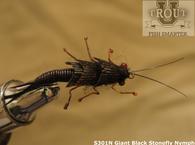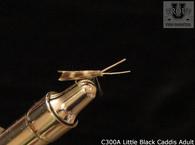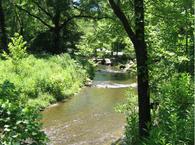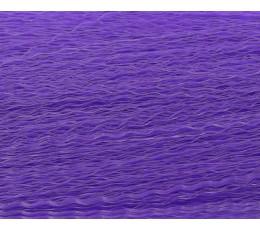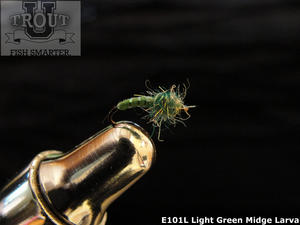
Chironomid is the scientific name for midges which are small insects, averaging from 1 to 10mm long and resembling mosquitos, but unlike mosquitos they do not bite. They live in fertile streams and ponds and are extremely prolific, which is why they are often seen as clouds of insects. They are an important source of food for trout all year long. In the late summer and the winters, they take up the slack when other aquatic hatches have slowed.
The female midges will lay eggs over water but sometimes will be attached to vegetation. After the eggs hatch, the larvae will fall to the water and go to the bottom of the streams or lakes. The majority of midge larvae build mud tubes where they will remain on the bottom for about 4 weeks. The larvae can float or they can swim by wiggling or they can crawl along the bottom as well. The larvae of the free-swimming species are the larvae that are of most interest to fly fishers.
There are almost an infinite number of different species of midges however; all have segmented bodies, a pair of prolegs, and they almost always have dark heads. Most of the larvae are green, cream, or red in color and the red ones are often referred to as “blood worms”.
After the pupae emerge, they look almost like the larva except that they are thicker and have wings. It is this stage where they become even more interest to fly fishermen. During this time, they swim to the surface where they are suspended in a vertical position which is very different than most aquatic insects that suspend in a horizontal position. Air sacs on their wings provide the buoyancy needed for them to rise to the surface. These air sacs are shinny in appearance are will often attract trout. After they reach the surface, they experience difficulty in breaking though the surface film where they are readily scooped up by the trout.
After the pupae hatch into the two winged adults, they soon depart the water leaving little time for the trout to eat them. The adults have a short life span lasting not more than 5 days during which they mate with the males and lay their eggs
The male midges will swarm over the water in masses enticing the female to mate. While they are mating they often can be seen as large clusters of midges along the shoreline where the trout will be rising to take them. At other times the current and wind can cause them to collect them along the banks or in current seems in large clusters causing a feeding frenzy among the trout. After mating, the female will skim the surface of the water to deposit her eggs.
Most of the midges are eaten in their pupa stage of life and therefore, fly fishermen prefer to fish pupae imitations. To see some excellent imitations of midges in the pupae and the larvae stages go to Trout University.
Continue to watch Trout University for more about fly fishing with midges.


